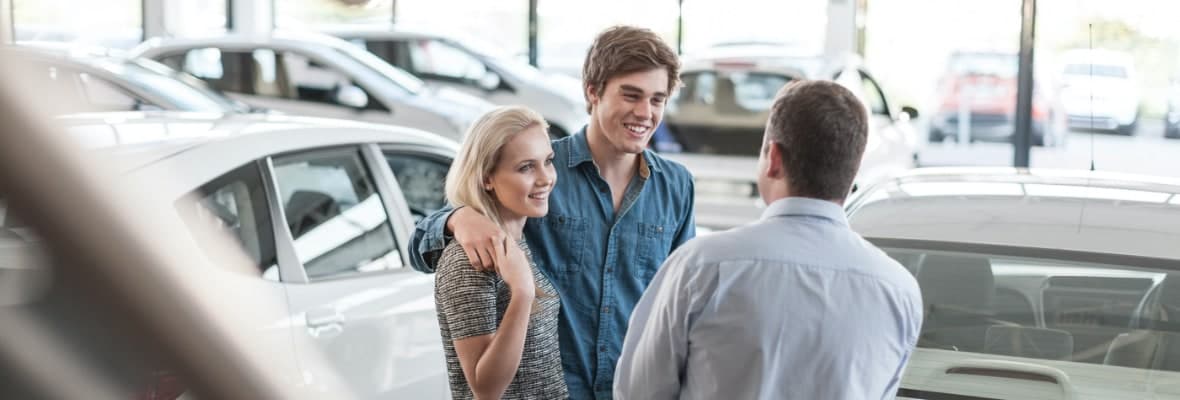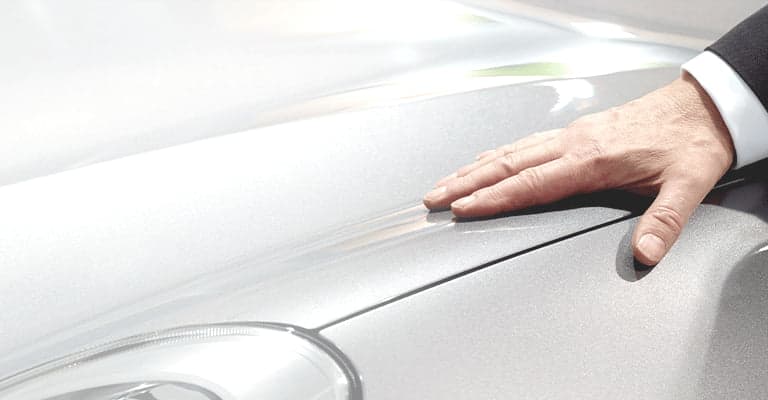Negotiating car price is a skill anyone can learn – and it’s one that can potentially save you hundreds or even thousands of dollars whether you’re buying new, used, privately or from a dealer.
Becoming a master negotiator comes down to combining a number of key ingredients: understanding the power you have as a buyer in a competitive market, doing your research, being aware of typical seller tricks to get you to pay more and staying flexible enough to maximise your options. Understanding the asking price is crucial, as it serves as the starting point for negotiations and can help you identify opportunities to secure a better deal. It's all about finding as many ways as possible to increase your leverage.
How many times have you heard someone brag about how they just ‘swung an amazing deal’ on their latest vehicle? Nine times out ten, they’re dead wrong: they only think they negotiated cleverly and got a bargain.
Walking into a car dealership or private sale without being properly prepared is like challenging a chess grandmaster to play for money. All the odds are in their favour. You may receive a useful lesson on how to play the game, but it may be an expensive one - and you could drive away without even realising you lost.
Before rushing out to haggle over your next vehicle, ask yourself some crucial questions.
- Do I know exactly what I want?
- What am I prepared to pay for it?
- When is the best month to buy a car?
- How much negotiating room is there on a new car
- And how much can I expect a dealership to come down in price on a used car?
- What basic negotiating rules should I be aware of when discussing price with a car seller?
Reviewing car price negotiation tips can help you approach these questions with confidence and improve your chances of getting a better deal.
Having a handle on the answers to these and other relevant questions places more power in your hands when you’re ready to buy. The more knowledge you bring to the table, the more money you’ll keep in your own pocket while still getting the car you want. Understanding the used car market and keeping an eye on trends can also influence your negotiation strategy and help you anticipate price fluctuations.
With that in mind, here are our nine top expert tips on how to negotiate a car price like a pro:
1. Research first, pull out your wallet later

Buying a car starts with deciding which vehicle is right for you. If you fully understand the type of car you need, you’re less likely to be talked into buying something you want from a car dealer playing on your emotions.
Base your decision on practicalities. Does your lifestyle suggest you’d be better off with a people-mover, a city-friendly SUV, a hybrid, a bush-bashing ute or a small, fuel-efficient sedan that fits into tight parking spaces?
Have a firm idea of what best matches your needs and then narrow it down to a handful of choices. This gives you a negotiating advantage because you can immediately dismiss unsuitable and budget-destroying choices out of hand. Focusing on one car at a time for a detailed inspection can help you spot specific features or issues that might otherwise be missed.
Think about the future, too. Are you planning to start a family soon? Will you be moving closer or further away from work one day soon? How much do you currently drive and what are the chances of that changing? How secure is your income and what can you realistically afford in the current economic climate?
Meticulous research saves money. Ring up a few local car dealerships and ask them their price for your preferred car – you may be surprised to get different answers. Check out popular online car selling sites (Carsguide, Carsales, etc.) to get a sense of current pricing. Keep an eye out for seasonal sales.
Listen to others’ advice but don’t let friends and family sway you into settling for something that doesn’t feel right for you. You’re the one who has to live with the decision. Try not to limit yourself to just one make and model; have a few options up your sleeve.
Take a test drive. Some cars look great but feel clunky to drive. Bring a trusted friend along for an objective second opinion. Pay particular attention to safety features, seat comfort and capacity, boot space, noise levels and overall ease of use. Once you’ve seen and felt the car perform during a test drive, go home, research some more and think carefully about all the pros and cons. Before making a decision, always obtain a vehicle history report to verify the car’s background and avoid potential issues.
Buying can wait until you know all about the car and how it stacks up against its nearest competitors. Being excited and in a rush hands the advantage over to the seller, so take your time. Learn the key specifications, compare packages, options, colours and dealer offerings and then make an informed decision, considering all aspects of the car purchase process.
Reviews can supply lots of information about a vehicle but not all reviews are equal. Seek out independent reviews from people who have owned and driven the cars themselves. Manufacturer reviews are biased by default – it’s not so much what they tell you as what they omit that can give you a false picture of a car’s relative worth in today’s market.
2. Familiarise yourself with car pricing
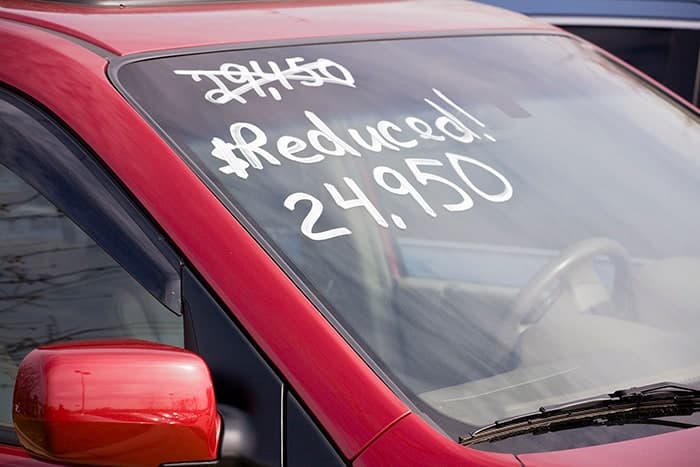
One way to unpleasantly surprise a dealer is by letting them know you’re aware of how car pricing works. This means understanding the difference between sticker price, invoice price and dealer holdback price, as well as the implications of ‘dealer incentives’ (cash rebates on selected new vehicles). Dealerships often have a certain price in mind that they are willing to accept, and understanding this can help guide your negotiation. Here’s the rundown:
Invoice price
This is the amount the dealer pays the carmaker. As a buyer, your aim is to get as close to the invoice price as possible when negotiating. You’ll find that Australian car buying websites are reluctant about sharing car invoice prices but you can get a good idea from American sites that freely publish them.
Sticker price
The vehicle’s manufacturer-set retail price is called the sticker price and is attached to the car when it leaves the factory. There’s only one rule you need to know about the sticker price – don’t ever pay it. You can always do better. If a dealer tries to suggest that the sticker price is actually their sale price, walk away quickly – you’re about to get ripped off.
And don’t forget that what you pay for a car is just the beginning of your expenses. You must also find room in your budget for fuel, insurance, parking, maintenance and unexpected repairs.
Dealer holdback price
This is an amount the dealer receives from the carmaker on every vehicle they sell and typically runs at around 3% of the retail (sticker) price. What this means in practice is that the dealer is effectively getting the car from the manufacturer at less than the invoice price, thereby boosting their profit. It never hurts to ask the dealer what their holdback price percentage is.
It’s unlikely you’ll ever get a dealer to bargain all the way down to their holdback price, since they need to make a profit to stay in business. Just be aware that the holdback price still lets the dealer make a profit even if they end up selling at close to the invoice price.
Don’t fall for the old ‘I’m not making a cent from this now’ line – they’re definitely making money from you. If you doubt that, just look around: expensive land, prime location, swanky offices, expansive, air-conditioned showrooms, well-dressed sales staff, etc. They’re usually doing just fine.
Cashback
When manufacturers want to promote specific makes and models, they might offer the dealer a rebate incentive to push those vehicles a bit more. This is also called ‘dealer cash’. It’s always worth investigating car websites to try and find out if your desired car carries some dealer cash.
3. Be on guard for common dealer tricks

Car dealers often get a bad rap but you can’t blame them for trying their best to maximise profit. Used car dealers are experienced at selling cars and skilled in negotiation, but buyers can still negotiate for a lower price. Their job is to sell a car as close as possible to the sticker price, while yours is to convince them to sell it nearer the invoice price.
Sellers use several methods to extract more money from you. Here are some of the main culprits:
Time pressure
Buy a car when you’re ready to, not because a seller has invented some reason why you must buy now. The ‘amazing deal’ they’re offering will almost certainly be there in a week after you’ve had time to cool off and think things over.
Unnecessary add-ons
To boost profit margins, dealers will try to get you to buy things you don’t need, from special paint and fabric protection to overpriced, low-value insurance. The extended warranty always gets a mention along with custom floor mats and rust protection.
Pass them all up – none offer good value. You can have your vehicle rustproofed at a specialist shop much cheaper than through a car dealership and unless you live right on the ocean or near an outback salt pan, you probably won’t need to anyway. Today’s new cars are less prone to rusting than older vehicles.
You’ll also more likely to get a better deal on car insurance if you shop around and do your own research. Dealership car insurance is typically just standard comprehensive insurance that’s been rebranded, often at a higher price.
Pushing you toward a car that gives them more profit
Dealers adore car buyers who don’t know what they want and give off an urgent, eager vibe. Play it cool, take your time, know your budget and be ultra-specific about your requirements. Otherwise, you’ll be shifted toward a model that makes more money for the dealer.
Focusing on monthly payments instead of bottom-line price
You may have noticed that car repayment terms are getting longer and longer. Twenty years ago, you could hardly find a car with a four-year loan. Today, maximum terms are up to seven years.
There are two reasons for this: (a) cars, like everything else, are costing more and (b) stretching out payments makes the car loan seem more affordable.
Focus on the total cost of the vehicle, not the monthly instalments. A lengthier loan may create smaller individual payments but means you’ll tend to fork out more in interest. Try to keep the term of the loan to three years if possible: you’ll save money in the long run.
Convincing you to obtain financing through the dealership
It’s not hard to find budget-friendly car financing and your bank or credit union is an excellent place to start. Avoid financing through a dealer. Their ‘zero percent financing’ may not be available to you without an elite credit rating and the alternative is paying a higher interest rate than you should.
Also beware of accepting a too-good-to-be-true rebate that forces you into higher interest rates down the track.
Mysterious extra fees
When signing papers to buy a car, pay attention to the details. Make sure all listed charges are legitimate. Registration fees, sales tax and legally mandatory documentation fees are standard. So are factory delivery fees, although you could certainly argue that the car is already sitting on their lot and ask for a discount.
Unnecessary charges to watch out for include admin fees, handling charges, advertising fees or any other dealer mark-ups you weren’t told about up front.
4. Keep the negotiating power on your side

Successful negotiating is about maintaining control; whoever is better able to guide the discussion in their direction normally comes out on top. Learning how to negotiate when buying a car is much easier if you stick to a few well-worn rules:
- Never reveal your maximum budget to the dealer - keeping this information private helps you maintain negotiation leverage.
- Be sure to visit several dealerships. Comparing offers from one dealership to other dealerships allows you to leverage competition and secure a better deal, so you get the best price and terms available.
Stay flexible
When you lock yourself into one make, model and colour with specific options, you pass a lot of power to the dealer. Flexibility usually translates to a better deal. With some wriggle room in your preferences, you’ll find that more dealers will have what you want in stock, which means you can get them to out-quote each other. Flexibility provides walk-away leverage.
Visit several dealerships
The ‘three dealership rule’ has stood the test of time for new car buyers for a reason – it works. Pick a convenient weekend to visit at least three different dealers in your area – never just one. Get a written quote from all of them on your chosen vehicle and pick the lowest. Then go back to the other dealers and ask if they can beat it. Once you have the best price, you’re ready to buy.
Don't volunteer information
In negotiating, it’s better to be the one asking the questions than the one answering them. Car salespeople have fine-tuned the art of being charming, relaxed and friendly while simultaneously squeezing all the information they can from you in order to size up your weak points. Hold your cards close to your chest and only provide information you feel is relevant. You’re not there to become the dealer’s friend – you’re there to get the best price.
Make an appointment
Set up a definite time to meet with each car dealer. This sets you apart from the tyre-kickers they’re used to dealing with and shows them you’re a serious buyer. In theory, it also ensures you won’t have to wait around for an available salesperson when you arrive.
Always be genuinely prepared to walk away
Although some car sellers might try to convince you otherwise, deals don’t evaporate when you turn around and walk out the door. If anything they might improve, since you’ve shown you’re happy to look elsewhere. Always leave your number so they can get in touch if they change their mind about accepting your final offer.
Use the 'if' and 'then' technique
One of the most effective negotiating tactics at your disposal is the ‘if/then’ method. It’s a simple matter of offering the seller an easy-to-digest choice, like saying “If you’ll consider coming down to my price, then I’m prepared to pay for the car right now.” Providing an immediate incentive can work wonders and means they’re making the compromise - not you.
5. Paying cash vs financing

Do dealers prefer financing or cash sales – and which is best for you? It all depends on your personal financial circumstances, the way the car dealership runs its business, the economic situation at the time you buy and many other factors.
One obvious advantage of paying cash is that you’re not paying interest. Some dealerships love financing because they earn a commission from the lender, making an extra profit on the loan.
Other dealers may prefer cash sales because they immediately close the deal. They might even offer a cash discount. Ask the dealer about their preferred paying methods early on. You’ll find that most private sellers tend to prefer a quick cash sale too.
If you prefer to put your spare cash toward offsetting your mortgage instead of paying for a new car, you could end up ahead. There are lots of variables to consider, so it’s sensible to consult a financial adviser to discuss the best options.
6. Timing is everything
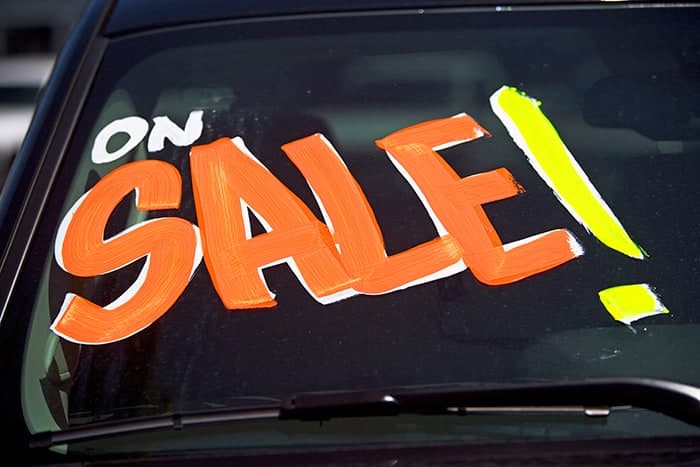
Sometimes, knowing when to buy a car is even more important than where you buy it from. For example:
End of the financial year
With new car sales revving up and dealers anxious to meet sales targets, this is when the Aussie car market gets pleasantly competitive. Deals abound, including offers for free extended warranties, window tinting, a full tank of fuel and other extras. Advertising is boosted, prices are cut and buyers reap the benefits.
End of the calendar year
When is the best month to buy a new or used car? Some experts say December. As Christmas draws nearer, dealers become more anxious to sell cars before they become last year’s models.
Because vehicles are shipped to Australia by boat and this can take months, dealers are often left with an excess of arrival-delayed older stock as the year comes to an end. The result: bargains for the patient buyer.
End of the month
The tail end of a month (or quarter) can sometimes reap a sweet deal, as sellers push hard to reach sales targets that earn them a substantial bonus from the manufacturer.
Their desire to sell just a few more cars before an end-of-month deadline can work in your favour, since for them it’s more about moving a particular quantity of cars than making a profit on your car.
Model run-out sales
If you know when an updated version of a popular model is due for release, you can plan your strategy around getting the best deal on the soon-to-be-replaced stock. The trick here is gathering as much information as possible as early as you can. There’s plenty to consider, though: the new model might have vastly improved features, making it even better value than its predecessor.
You also need to accept that the arrival of a new model will crank up the depreciation on your older version. On the plus side, you’ll have more negotiating room when chasing a run-out model compared to its brand new equivalent.
New Year plate clearance sales
Dealers keen to unload older stock in December are even more motivated in the New Year. Once Jan/Feb arrives, they’ll want to shift as much previous-year stock as possible. This is called plate clearance because it relates to the date stamped on the vehicle’s build plate.
Plate clearance sales can offer juicy discounts, especially as March draws closer and those older cars take up showroom space reserved for new vehicles.
7. Trading in your used car
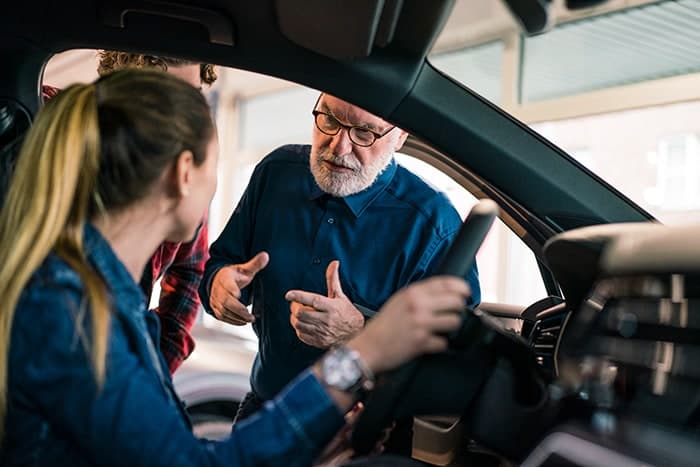
Trading in your old vehicle when buying a newer one can seem quite convenient since it avoids the effort of advertising and selling it privately. The value of your used vehicle as a trade-in is typically based on its wholesale value, which is generally lower than what you might get selling privately. Unfortunately, that’s not much of an advantage. You’ll almost always make more money by selling your old car privately because that sale will be based on its actual market value rather than the wholesale value, which is what dealerships use to calculate how much they’ll give you for it as a trade-in.
If you still want to go through a dealer, check out your car’s approximate value through Redbook, Carsales or similar websites that offer online value calculators.
8. Should you buy a used car privately or from a dealer?

The answer depends on your priorities. Do you want the process to be easier or cheaper? If you want it easier, then buying from a dealer makes sense. They'll usually accept a trade-in. They have much more experience handling all the required paperwork than the average private seller. And aside from taking care of things like registration and transfer of title, dealers will also offer a warranty. Most importantly, when buying from a dealer, you are protected by the Australian Consumer Law, which provides specific rights and legal protections for consumers, including guarantees against faulty vehicles and obligations for fair dealing.
When it comes to price, however, you’ll usually do better with a private seller, especially one seeking an urgent sale. A private sale can produce amazingly good value for money - but there are potential pitfalls to watch out for. Sellers aren’t required to disclose possible problems or provide a warranty, so any mechanical issues will be your responsibility after purchase. And, unlike dealership purchases in some states, private sales do not include a cooling off period, meaning you cannot easily cancel the sale once the contract is signed.
That’s why it’s so important when buying ‘pre-loved'’ through a private seller to (a) conduct a test drive at all speeds in a variety of driving environments, including city streets to assess the car’s performance and handling in urban conditions, (b) ask to see a service history and roadworthy certificate, (c) hire a mechanic to inspect the car and provide a written report and (d) obtain a written receipt that contains full buyer and seller details, sale price and vehicle identification number (VIN).
You should also use Budget Direct’s free PPSR car history report. This will tell you if the car has any finance owing or previous insurance claims and whether it has been stolen or written off. And better yet – the tool is completely free to use!
9. Negotiate your way
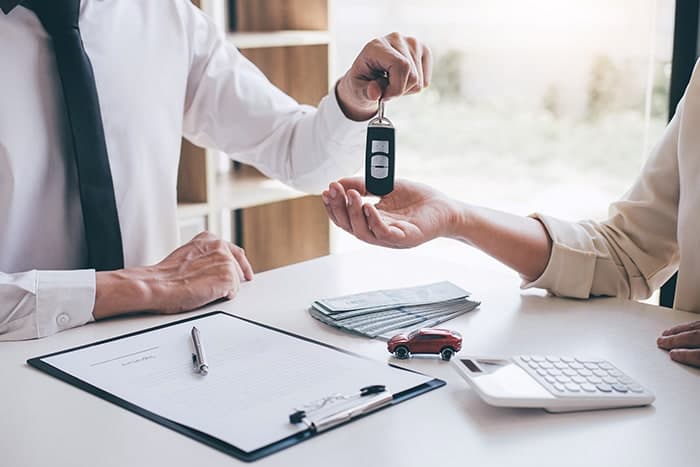
Learning when to buy a new car and how much you can negotiate on a used car are handy life skills that can help you get the vehicle of your dreams without breaking your budget. Your negotiating style won’t be the same as anyone else’s, so just do whatever works best for you.
Some buyers swear by the ‘walk in with the offer and then walk out’ approach, while others prefer to start with a low-ball offer and incrementally work their way up to what they’re really prepared to pay. Either way, successful negotiation starts with confidence: dealers can smell shaky resolve from a kilometre away.
And remember that in most cases, there’s always a better deal to be found elsewhere if you look hard enough. Happy hunting!
